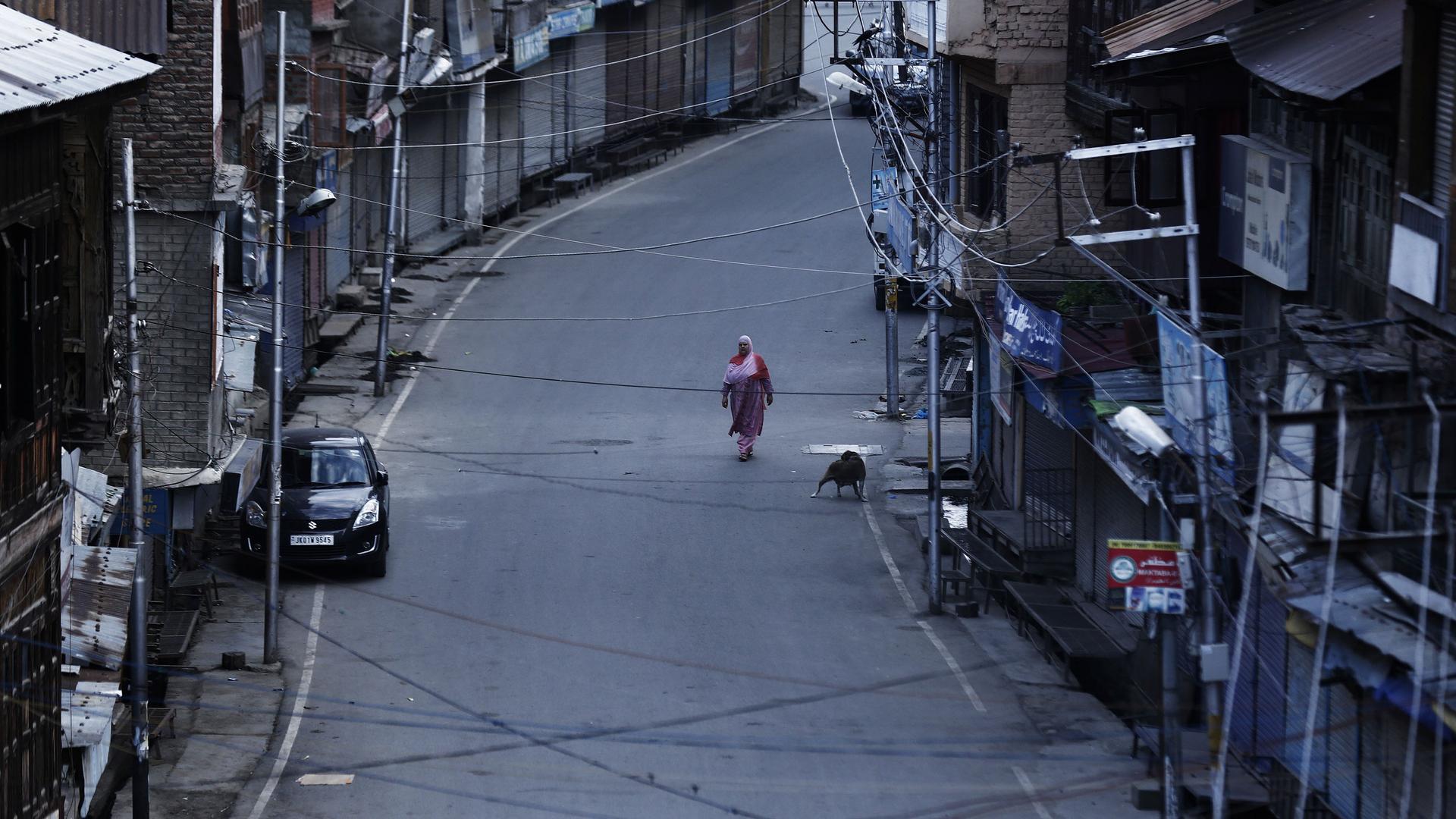One month after crackdown, protests continue in Kashmir
A Kashmiri woman walks on a deserted road in Srinagar on Aug. 25, 2019, during restrictions put in place after the Indian government ended the special constitutional status for Kashmir.
A month after India withdrew contested Kashmir’s autonomy, locked it down with thousands of additional troops and made mass arrests, residents are resisting attempts by authorities to show some signs of normalcy returning in the Muslim-majority valley.
Prime Minister Narendra Modi revoked special rights for Jammu and Kashmir state on Aug. 5, striking down long-standing constitutional provisions for the Himalayan region, which is also claimed by neighboring Pakistan.
To dampen the possibility of widespread protests, India flooded Kashmir — already one of the world’s most militarized zones — with troops, imposed severe restrictions on movements, and cut all telephone, mobile phone and internet connections. Thousands of people were arrested.
Related: In Kashmir and elsewhere, digital authoritarianism is on the rise
New Delhi has since eased some of the curbs although no prominent detainees have been freed and mobile and internet connections remain suspended.
Officials in Jammu and Kashmir’s summer capital of Srinagar say that 90% of the Kashmir valley is free of restrictions on daytime movement, some landline phone connections have been restored and thousands of schools have re-opened. However, checkpoints remain in place and communication restrictions make reporting from the region difficult. Despite the partial relaxation, many students are boycotting classes, shopkeepers are not opening up and public and private sector employees are not turning up for work, in informal action aimed at protesting against the government in New Delhi, according to interviews with seven government officials and dozens of residents of the valley.
Related: Kashmir conflict ‘stakes are high for the whole world,’ says former ambassador
“For us, our identity at stake and its safeguarding is our priority,” said Shabir Ahmad, a shopkeeper from the old quarter of Srinagar. “Let them restore it and we will re-start our businesses.”
The civil disobedience has sprung up alongside small but regular protests by stone-throwing crowds that have been quickly quashed by security forces with tear gas and pellet guns. Many Kashmiris argue that things are still far from normal and protests will continue.
Vasuki Shastry, an associate fellow at the Asian-Pacific program at Chatham House, a think tank in London, spoke with The World’s Marco Werman about the prospects for Kashmiri independence.
Marco Werman: This all started on Aug. 5 when Article 370 was first revoked by the Indian government. What’s happened in Kashmir since then?
Vasuki Shastry: I think it’d be useful to look at this in terms of what has not happened. The first thing that has not happened which really concerned the international community is there’s been no escalation in hostilities between India and Pakistan. Listeners may recall that at the beginning of the year, India and Pakistan almost went to war after the suicide bombing of Indian paramilitary forces in Kashmir, which led to an upsurge in air warfare. But fortunately, both sides decided to exercise restraint. So at the start of the month when India took this action, there was obviously a great deal of concern about two nuclear powers going to war. But I think all of this is bluster. Both sides recognize that the costs of war would be devastating.
What do you think this tells us about the state of India today? I mean a Hindu-majority country with a very large Muslim-minority that feels, I think, eclipsed?
India in the same category as Turkey, as China — you know, hyper-nationalism. We are living in an era of hyper-nationalism. I’ve been struck by the fact that there’s so little international condemnation towards India after it carried out its act. In a way, states are able to act in a daring fashion, really recognizing that the condemnation of the international community is not going to matter much.
How much did Modi’s revoking Article 370 start or maybe restart a conversation in Kashmir about independence?
There are two ways of looking at this: The narrative within Pakistan has been that Kashmir needs a referendum. Kashmiris should decide … whether they remain a part of India or whether they become a part of Pakistan. That narrative has changed over time. There are a number of disaffected young Kashmiris today who I think if you go and speak with them [will say they] don’t like the idea of Kashmir being a part of Pakistan. But at the same time, there’s a huge polarization on the ground on what independence would actually mean. What would an independent Kashmir actually look like? It’s a landlocked state with very limited access to trade. So they’re really in this surreal state where they’re suffering on a daily basis all the depredations brought to them by the Indian armed forces and the police on the ground. But at the same time, there isn’t a leader in Kashmir who has the vision or the charisma to carry much of the state towards the idea of an independent Kashmir.
Reuters contributed to this report.
